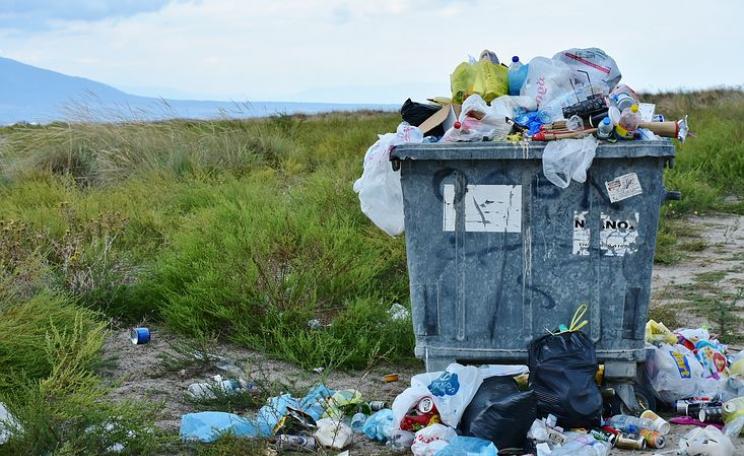There is a Plan, there is a Vision - and the only real question is how to drive it forward.
It has all made for a fantastic media drama - the striking shots of the inundated Somerset Levels, whole villages under water, wild accusations of incompetence and skullduggery thrown at the Environment Agency, fierce swipes at the 'environment brigade' in general - accused of putting birds and flowers before people flooded out of their homes - claims of a fragile rural economy put at risk - and the ever louder cry of "Dredge, dredge, dredge!"
But where does this captivating narrative come from? It is, as The Ecologist has uncovered, a completely false narrative that has been worked up by Britain's constantly attention-seeking media, with the active connivance of populist politicians and commentators desperate to drive a right-wing anti-Green agenda - and for whom the Somerset floods provide the perfect battle field.
An astonishing agreement has been reached
The truth is that an astonishing consensus has been reached among all the principal parties with interests in the Levels: Somerset County Council, the Somerset District Councils, the National Farmers Union (NFU), the Somerset Consortium of Drainage Boards, the Farming and Wildlife Advisory Group (FWAG), Somerset Wildlife Trust, the Royal Society for the Protection of Birds (RSPB), the official wildlife agency Natural England, and the Environment Agency.
The 'Vision 2030' document, agreed at the end of January and published yesterday by The Ecologist - its first airing in the entire British media - presents a forward looking and notably 'green' view of how the Somerset Levels and Moors should develop over the next 16 years.
"Extensively managed wet grassland dominates the scene", it says. "The floodplains are managed to accommodate winter flooding whilst reducing flood risk elsewhere." On the low-lying peat moors, "water levels have been adopted which conserve peat soils and avoid the loss of carbon to the atmosphere."
A world class haven for wildlife
The area should become a "world-class haven for wildlife and water fowl. The Levels and Moors are regarded as one of the great natural spectacles in the UK and Europe with a mix of diverse and valuable habitats."
"Previously fragmented habitats such as fen and flower-rich meadows have been re-connected and are widely distributed. In the north of the area over 1,600 ha are managed as reed-bed, open water and bog ... Each winter the wetlands attract large numbers of wintering wildfowl and waders regularly exceeding 130,000 birds. Wetland species such as Crane, Bittern and pollinator populations flourish."
"Optimum use is being made of the agricultural potential of the Levels and Moors, particularly on the higher land, whilst unsustainable farming practices have been adapted or replaced to secure a robust, sustainable base to the local economy."
There is a Plan, there is a Vision - and the only real question is how to drive it forward.
A flourishing green economy
They are likewise agreed on the need for "a flourishing green economy for food and tourism" to take root. "New businesses, including those based on 'green tourism', have developed, meeting the needs of local people and visitors alike, while brands based on the area's special qualities are helping farmers to add value to the meat, milk and other goods and services that they produce."
An important part of this 'green economy' is tourism drawn by the Levels' internationally important archaeological and historic heritage, which is to be "protected from threats to its survival and is justly celebrated, providing a draw to visitors and a source of pride and identity to local communities."
Meanwhile farmers and landowners are to be "rewarded financially for the public benefits and ecosystem services they provide by their land management including flood risk management, coastal management, carbon storage and the natural environment."
Why is the good news not reported?
That all parties have come together to agree on this view of the future, both progressive and pragmatic, is an astonishing 'good news story' amid the very real tales of human woe.
Perhaps it is for that very reason that the mainstream media have chosen to ignore it. It simply does not fit into their preferred confrontational and simplistic narratives of 'birds versus farmers', or 'floods versus people'.
It also completely undermines the battle cry of right wing media commentators who love to wax lyrical about bungling, uncaring bureaucracies, sustained at massive taxpayer expense but delivering nothing.
Just the thing to justify further cuts in the budget of the Environment Agency, which is aleady to lose 1,700 of its employees, 10% of its head count, just as its services and expertise have never been more desperately needed. The cuts include 550 jobs lost among the very staff responsible for flood response and resilience.
More good sense
Another document that contains an remarkable amount of good sense is the 10-point plan released by the Somerset Consortium of Drainage Boards - one of the bodies signed up to Vision 2030:
- Maximise the conveyance of the lowland rivers in Somerset and maintain them.
- Construct a tidal exclusion sluice on the River Parrett as already exists on other rivers in Somerset.
- All land and property owners in Somerset to contribute to the funding of flood risk management work within their catchments.
- Increase soil infiltration and store more flood water in the upper catchments.
- Reduce urban run-off.
- Promote flood resilience and property level protection in the whole catchment.
- Promote and assist the relocation of very flood vulnerable households out of the floodplain.
- Acknowledge and provide assistance to land owners on moors identified as flood storage areas.
- Provide assistance to farmers and others to adapt their businesses in areas used for flood storage.
- Assist farms in flood storage moors to become resilient to flooding and provide assistance to relocate intensive farming activities out of the floodplain with assisted land swops.
Again, there is very little for anyone - even the most committed Green advocate - to disagree with in this document, which is entirely consistent with Vision 2030. There may be some slight scope for debate about the high priority given to dredging - but that's about all.
Now for the real debate - how to make it happen
The key thing now is to move the debate on from the dramatic and diverting but ultimately sterile mischaracterisation portrayed by mainstream media. There is a Plan, there is a Vision - and the only real question is how to drive it forward.
A large part of the money to pay for it - and there will be substantial costs - will have to come from the European Union's agri-environment funding.
A very successful scheme run by Natural England and its predecessors - which paid farmers on the within the Somerset Levels 'Environmentally Sensitive Area (ESA) premiums to maintain high water levels and restore traditional land management practices - has come to an end. It now needs to be replaced with a similar new scheme tailored specifically to the needs of both conservation and farming interests.
Restore funding to the Environment Agency
Meanwhile funding needs to be restored to the Environment Agency so that it cannot merely continue to do the job it was doing before, but expand and enhance its efforts to move beyond the narrow confines of the river channels - where right wing politicos would like the EA's job to begin and end.
Flood and water management must be, as the Somerset Drainage Boards argued, a catchment-wide effort involving not only dredging but sustainable urban drainage, reforestation in headwaters, and management and preservation of floodplains to accommodate floodwaters.
All this will need increases in funding, not the cuts that beleaguered Environment Secretary Owen Paterson is only too willing to impose. And this is the real political battle ahead - getting the Government to pay up.







